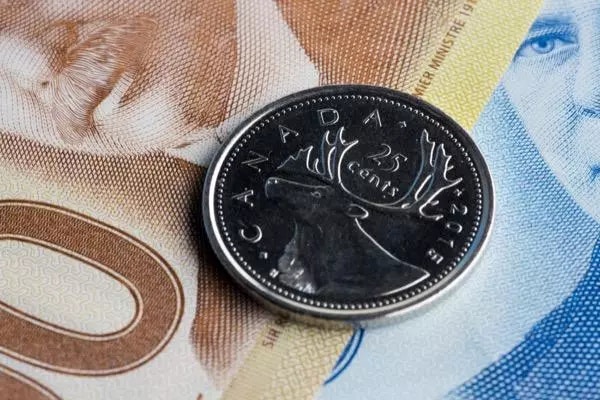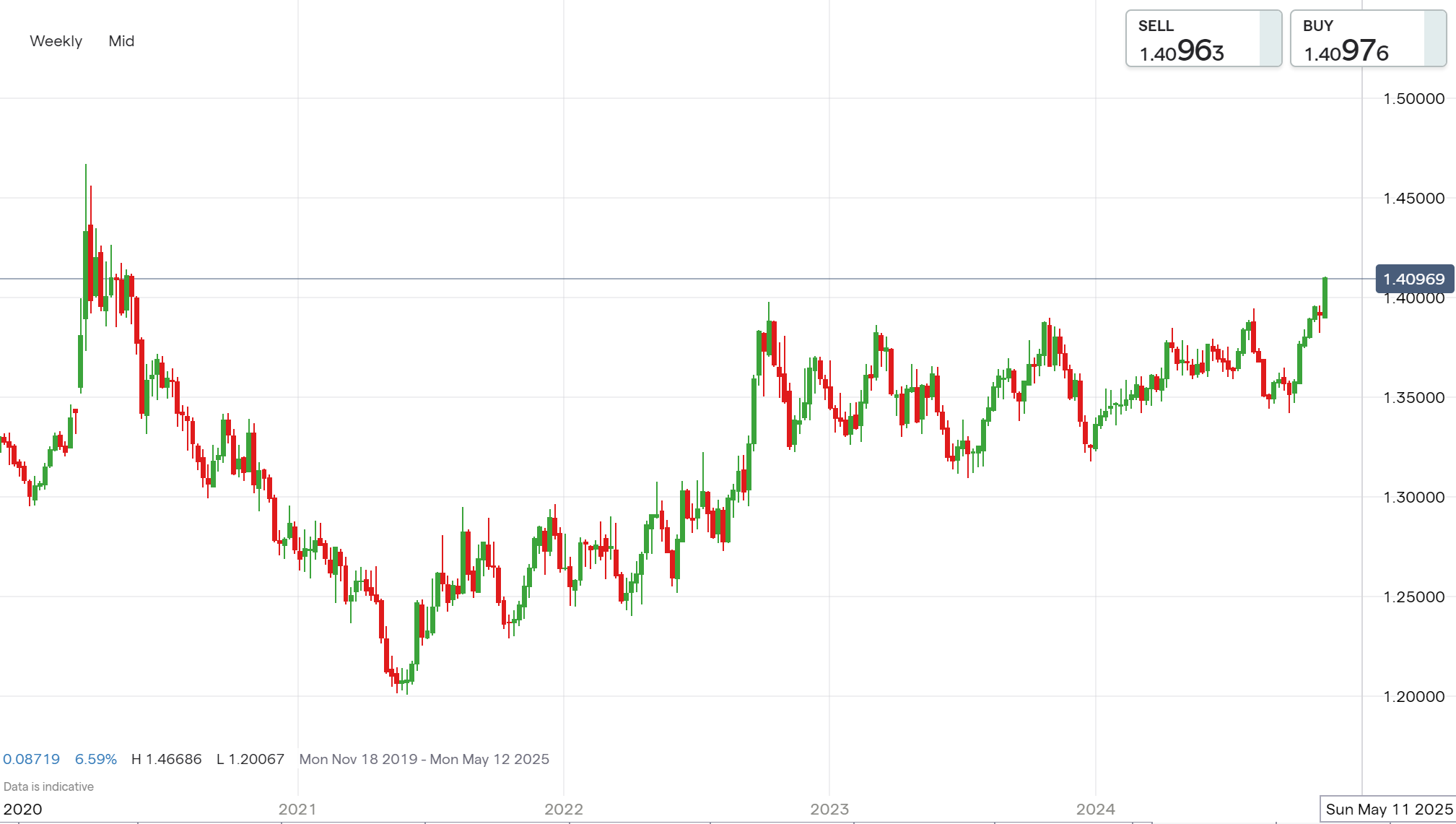USD/CAD price action: CAD weakens to near 4-year lows against USD
USD/CAD rises as CAD weakens due to strong USD demand, low oil prices, and China growth concerns. Canadian economic resilience and potential US fiscal shifts may influence future exchange rate dynamics.

Key points
- USD/CAD reaches 1.41057, lowest since May 2020
- Strong US dollar demand driven by Trump's policies
- Potential US sanctions threaten Canadian exports
- Canada's economic resilience limits CAD decline
- Traders should watch US policies and oil prices for USD/CAD shifts
USD/CAD Price Action: CAD Weakens to Near 4-Year Lows Against USD
The USD/CAD currency pair has seen the Canadian dollar slip to a key breakout point of 1.41057 per USD, marking its weakest level since May 2020. This bearish trend for the CAD is primarily attributed to strong US dollar demand, driven by market speculation about Trump's return and inflation-driven policies that may limit the Federal Reserve's ability to cut interest rates. Additionally, falling oil prices and concerns about China's economic growth have further pressured the Canadian dollar, as these factors negatively impact Canada's export-driven economy.
USD/CAD price history

CAD Weakness Explained: Imports, China, and Oil
Potential US import sanctions have sparked fears of reduced demand for Canadian goods in its primary export market. Alongside this, declining oil prices and weakened demand from China—due to disappointing economic indicators and stimulus efforts—have led to decreased foreign interest in the Canadian dollar. Despite these challenges, Canada's economy has shown resilience with lower-than-expected unemployment rates and strong PMI data, which have tempered expectations for major rate cuts by the Bank of Canada, thus limiting further declines in the CAD.
US DXY Holding Near Historical Highs Following Strong US Retail Sales
The US dollar index remains on its bullish trend around 106.5, maintaining near two-year highs and marking a seventh consecutive week of growth. Retail sales exceeded expectations with a 0.4% increase, indicating consumer resilience, while core producer prices and annual growth rates surpassed forecasts. This economic strength, as highlighted by the Fed, show a potential reduced urgency for rate cuts in the near future, decreasing December's 25bps rate cut expectations from 86% to 62%. The robust US economy and cautious Federal Reserve stance continue to support the dollar's strength.
What’s Next for USD/CAD?
The possibility of US import sanctions continues to threaten demand for Canadian exports, which rely heavily on the US market. Declining crude oil prices and a weakened demand outlook from China have further dampened foreign interest in the CAD. However, positive economic indicators in Canada could moderate expectations for aggressive rate cuts by the Bank of Canada, offering some support for the loonie. The USD/CAD pair's future trajectory will depend on US policy developments, oil price trends, and Canada's economic data. Traders should closely monitor these factors to anticipate shifts in the exchange rate effectively.
How to Trade USD/CAD
- Open an account to get started, or practice on a demo account
- Choose your forex trading platform
- Open, monitor, and close positions on USD/CAD
Trading forex requires an account with a forex provider like tastyfx. Many traders also watch major forex pairs like EUR/USD and USD/JPY for potential opportunities based on economic events such as inflation releases or interest rate decisions. Economic events can produce more volatility for forex pairs, which can mean greater potential profits and losses as risks can increase at these times.
You can help develop your forex trading strategies using resources like tastyfx’s YouTube channel. Our curated playlists can help you stay up to date on current markets and understanding key terms. Once your strategy is developed, you can follow the above steps to opening an account and getting started trading forex.
Your profit or loss is calculated according to your full position size. Leverage will magnify both your profits and losses. It’s important to manage your risks carefully as losses can exceed your deposit. Ensure you understand the risks and benefits associated with trading leveraged products before you start trading with them. Trade using money you’re comfortable losing. Past performance is not indicative of future results.
